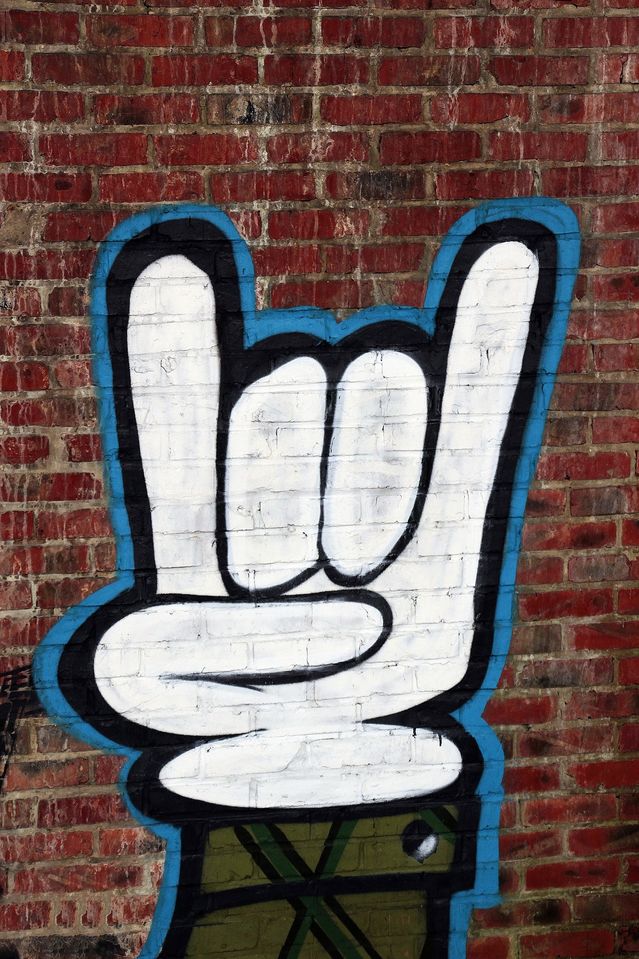Stress
Can Flipping the Bird Reduce Pain?
Verbal swearing helps. What about a taboo gesture?
Posted December 10, 2018

New research published in the Scandinavian Journal of Pain on Friday, December 8th, 2018 challenges the old adage that actions speak louder than words.
This new study was carried out at Tilburg University in the Netherlands by Ilja van Beest, Richard Stephens (author of this blog) and Masters student Maarten Jacobs. This is the latest in a series of experiments assessing the beneficial effects of swearing as a response to pain.
Taboo Hand Gestures
In this study, rather than swearing verbally, which has previously been shown to help people to better tolerate the pain of plunging their hand into ice cold water, now volunteers were asked to make a taboo hand gesture while their hand was immersed.
The idea behind the study was to see to whether the effect of verbal swearing would translate to a different modality, by which we mean a different one of the five senses (see, hear, touch, smell, taste). In this case, it was visual—using a middle finger gesture—as opposed to our previous studies on verbally articulated swearing.
There was good reason to suppose this would be the case as previous research has shown that hand gestures can impact psychology. For example, clenching the fist can make the person feel more powerful and confident, while making a hand-over-heart gesture can make the person feel more honest. Another factor that made us expect to see a see a pain-relieving effect of “visual swearing” was because making a middle finger gesture would bring to mind similar kinds of taboo thoughts and ideas as happens for verbal swearing.
However, after running the study with human volunteers and analysing the data, no such effect was present. The research found that while participants recognised the middle finger gesture as taboo, still it showed no beneficial effect on their ability to tolerate pain. Participants were not able to hold their hand in ice water for longer while making the middle finger gesture compared with an index finger gesture. They also did not report perceiving a lesser amount of pain when making the middle finger gesture compared with the index finger.
There was one beneficial effect of the taboo gesture over pointing with the index finger—people rated their experience of ice water submersion more positively with the middle finger. While this might provide some modicum of relief in the context of pain, overall, this study concludes that making the taboo middle finger gesture does not provide pain relief in the same way that verbal swearing has been shown to.
A strange task
The researchers wondered whether the finger gesture didn’t work the same way as verbal swearing because of the unfamiliarity and general strangeness of making a gestural response during pain compared with making a verbal swearing response, which is very common. However, findings from a recent study by Keele University Ph.D. student Olly Robertson, suggest otherwise. Olly ran a version of the swearing and pain/ice water study with native Japanese speakers. The Japanese language does not incorporate swearing and so this study had volunteers use the Japanese word “kuso,” defined in the dictionary as “crude for feces.” Still, a beneficial effect of using this word during an ice water pain challenge was shown. Demonastrating that this unfamiliar response to pain for these individuals showed a pain-relieving effect suggests that familiarity with swearing in response to pain is not necessary for pain-relief to occur. On this basis, it is unlikely that unfamiliarity with making the middle finger gesture in response to pain is the reason it did not have a beneficial effect.
Introduction of a target
The middle finger gesture is understood as an insulting gesture made towards a target, usually a person, but sometimes an object, for example, making the gesture to a computer that has frozen. This adds an element not present in previous studies which used swearing out loud, not directed at any target. Perhaps the element of social risk one is exposed to in using an insult usually aimed at a target adds stress which works against any pain-relieving effect. This remains unknown.
For now, the researchers' conclusion is that words speak louder than actions, at least when it comes to resisting a painful challenge. While verbal swearing and making a taboo gesture both involve bringing to mind taboo concepts, flipping the bird showed no pain-relieving effects in the present study in contrast to verbal swearing which has been shown to be beneficial in previous research. Whether, in general, verbal swearing represents a more powerful expressive medium than making a taboo hand gesture is up for debate.
Ig Nobel Prize
On a personal note, I first met my collaborator on this project, Ilja van Beest, when we were both attending a ceremony in 2010 as recipients of Ig Nobel Prizes. These are awarded each year for research that first makes you laugh and then makes you think. This latest study may well continue that tradition.
References
Jacobs, M., van Beest, I. & Stephens, R. (2018). Taboo gesticulations as a response to pain. Scandinavian Journal of Pain, 0(0), pp. -. Retrieved 10 Dec. 2018, from doi:10.1515/sjpain-2018-0321


